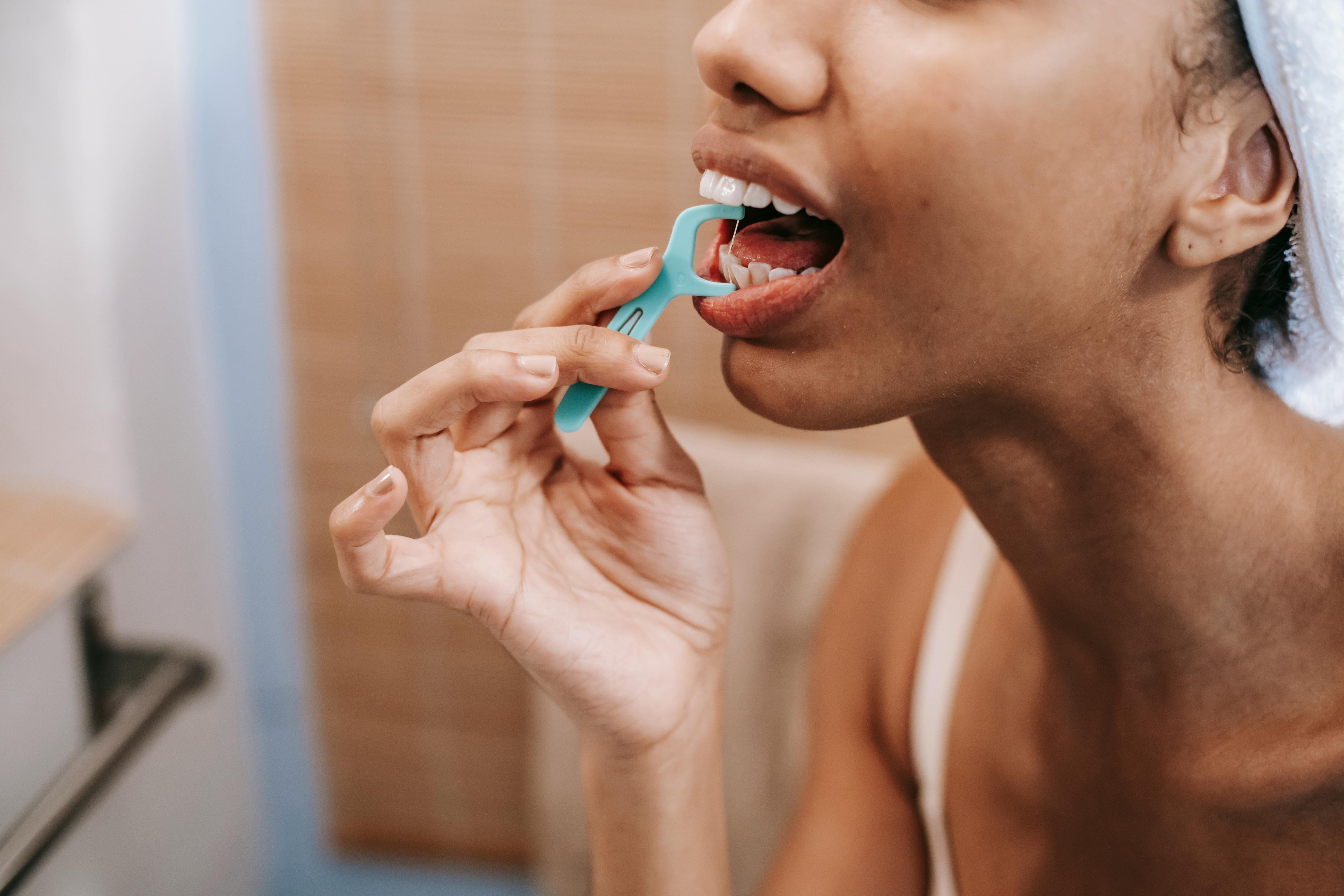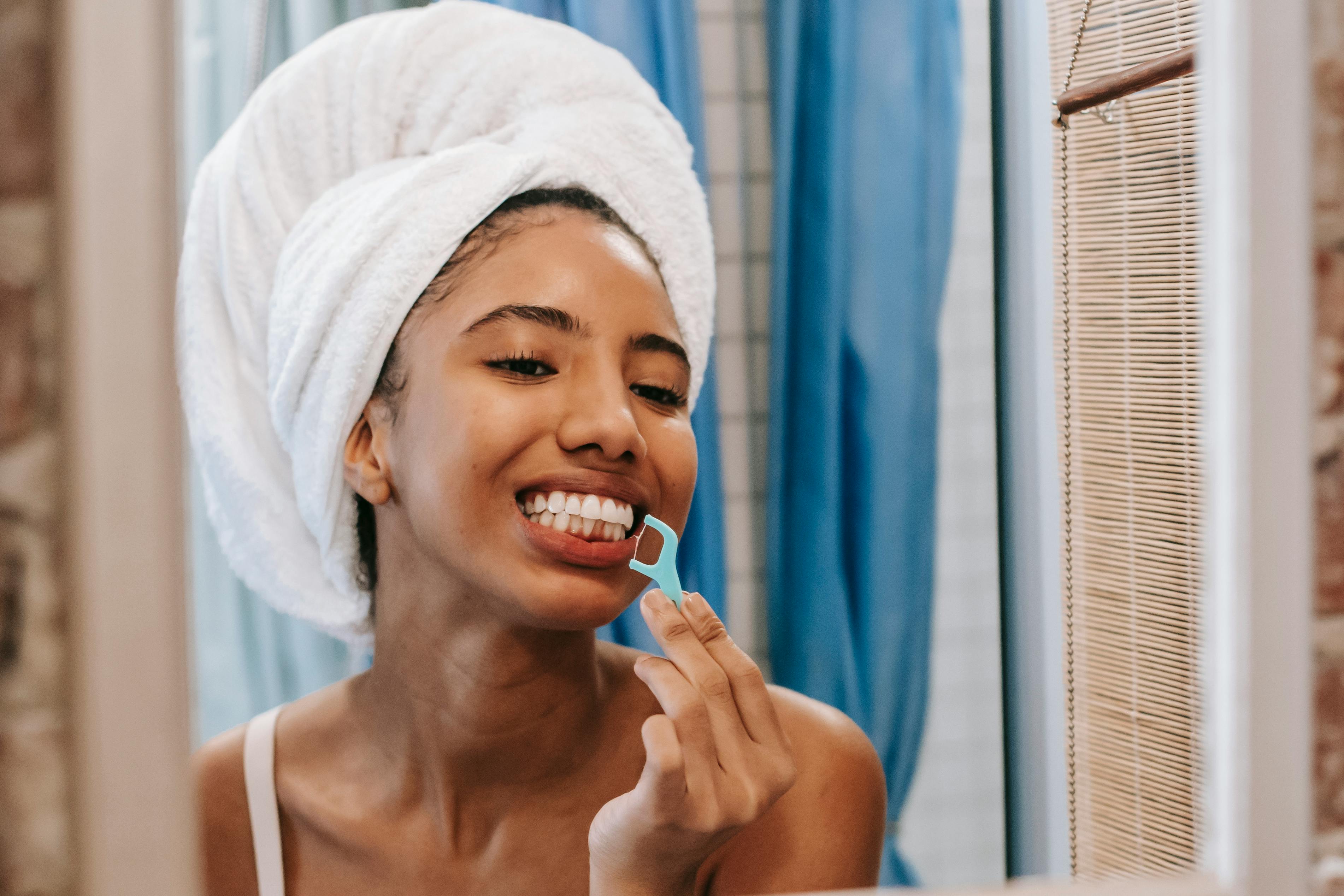Brushing and flossing your teeth regularly is the best way to keep them healthy. However, sometimes it can be difficult to reach all the nooks and crannies of your mouth with a toothbrush. To help you get a better clean, you can use dental tools such as interdental brushes and tongue scrapers. In this article, we will go over how to properly clean your own teeth with dental tools.The benefits of cleaning your own teeth include improved oral health, fresher breath, reduced risk of tooth decay and gum disease, and a brighter smile. Brushing your teeth twice daily helps remove plaque and bacteria that can cause cavities and gum disease. Additionally, flossing regularly can remove plaque between the teeth that brushing alone cannot reach. Regularly cleaning your teeth can also reduce bad breath by removing bacteria from the mouth that may be causing odor. Finally, regularly brushing and flossing can help to maintain a brighter smile by removing surface stains caused by food, drinks, or tobacco use.
What Tools Are Needed to Clean Your Own Teeth?
Having the right tools to clean your own teeth is essential for oral health. The most important things you need are a toothbrush, toothpaste, dental floss, and mouthwash.
A toothbrush should have soft bristles and be comfortable in your hand. It’s important that you replace your toothbrush every two or three months, or sooner if the bristles become frayed.
Toothpaste is also important for removing plaque and preventing cavities. Look for a paste that contains fluoride and has the American Dental Association seal of approval.
Flossing is an important part of oral hygiene, as it reaches areas between the teeth that a toothbrush cannot access. You can buy dental floss in waxed or unwaxed varieties, as well as special picks and brushes to help get between teeth more easily.
Finally, using an antibacterial mouthwash can help remove debris from hard-to-reach areas of the mouth and reduce bad breath. Choose an alcohol-free variety to prevent dryness in your mouth.
By following these steps and using the right tools, you can ensure that your teeth are healthy and strong for years to come!
How to Properly Brush Your Teeth
Proper teeth brushing is an essential part of maintaining good oral health. Brushing your teeth twice a day is one of the most important things you can do for your oral health and overall health. It’s crucial to learn how to properly brush your teeth, as brushing in the wrong way can cause damage to your gums and enamel. Here are some tips for proper dental hygiene:
• Start by using a soft-bristled brush that fits comfortably in your mouth. You may need to experiment with different sizes and shapes of brushes until you find one that works best for you.
• Place the bristles at a 45-degree angle against the gum line and use short, gentle strokes in a circular motion.
• Clean both the outer surfaces of each tooth, as well as the inner surfaces. Use extra care when cleaning around any fillings, crowns or other dental work.
• For best results, brush for at least two minutes, twice daily (or after every meal). Make sure to reach all areas of your mouth, including the back teeth and tongue.
• Finish by rinsing thoroughly with water or mouthwash to remove any remaining plaque or debris from your teeth and gums.
Remember, proper brushing techniques are important for maintaining good dental hygiene and overall health—so be sure to brush correctly every time!
Using a Toothpick
Using a toothpick is a great way to get into small spaces and remove debris from your teeth. Toothpicks are easy to use and can really help you keep your teeth clean. Here are some tips on how to use a toothpick correctly.
First, make sure you use the right type of toothpick for your mouth. There are several different types, including plastic, wooden, and bamboo toothpicks. Choose the one that is most comfortable for you and that won’t break easily in your mouth.
Next, hold the toothpick in one hand and place it between two of your teeth. Gently move the toothpick back and forth to dislodge any food particles or plaque that may be stuck between them. Do not put too much pressure on the toothpick or you could damage your gums. If needed, rinse the area with water before continuing.
Finally, when you are done using the toothpick, rinse your mouth with water to remove any debris that may have been dislodged during the process. Make sure you throw away the used toothpick after use to ensure it doesn’t spread bacteria to other areas of your mouth or get stuck in your throat!
Using Dental Floss
Dental floss is an important part of your daily oral hygiene routine and is essential for helping to prevent cavities and gum disease. It’s important to use dental floss correctly to ensure that it is effective. Here are some tips on how to use dental floss properly:
First, you will need a piece of dental floss that is about 18 inches long. Wrap the floss around your middle fingers, leaving one or two inches between them. Gently guide the floss between your teeth, using a sawing motion. Curve the floss into a C-shape around each tooth and gently slide it up and down against the side of each tooth. Be sure to go below the gum line too.
When you’re finished with one section of your mouth, unroll some fresh floss and repeat the process with the rest of your teeth. Don’t forget to floss behind your back teeth! When you’re finished, rinse your mouth with water or mouthwash for optimal results.
It’s important to use a clean section of dental floss each time you move from one tooth to another in order to avoid spreading bacteria from one tooth to another. When you’re done, throw away the used piece of dental floss in order to help prevent bacteria from spreading throughout your mouth.
By following these steps regularly, you can help keep your teeth and gums healthy and free from plaque buildup. Remember that regular brushing and regular visits to the dentist are also important for maintaining good oral health.

Setting Up Your Waterpik
Using a Waterpik is easy and relatively mess-free. To set up your Waterpik, first connect the hose that comes with it to the handle. Then attach the tip of your choice to the end of the hose, depending on what you’ll be using it for. Once everything is connected, fill the reservoir with warm water and plug it into an outlet.
Turn On Your Waterpik
Once your Waterpik is plugged in, turn it on by pressing the power button located near the base of the handle. You can then use a switch near the handle to change between different pressure settings. Start with a low pressure setting and gradually increase until you find one that works best for you.
Using Your Waterpik
When using a Waterpik, make sure that you don’t press too hard against your teeth or gums. Place the tip of the water jet against your teeth and gums gently and hold for about 10 seconds before moving onto another area. For best results, make sure to move around in a circular motion when flossing in order to ensure that all areas are being covered.
Cleaning Your Waterpik
It’s important to keep your Waterpik clean in order to prevent bacteria buildup and other potential health risks associated with using a dirty device. After each use, make sure to rinse off all parts of your Waterpik in warm water and allow them to air dry before storing away.
Interdental Brushes
Interdental brushes are an effective way to remove plaque and debris from between your teeth. They come in a variety of sizes and shapes, making them perfect for cleaning hard-to-reach areas. Interdental brushes can also help prevent cavities, gum disease, and bad breath.
Choosing an Interdental Brush
When choosing an interdental brush, it is important to select one that is the right size for your teeth. The brush should fit snugly between the teeth without causing discomfort. It is also important to choose one with soft bristles that won’t scratch or irritate the gum tissue.
How to Use an Interdental Brush
To use an interdental brush, start by gently inserting it between your teeth. Move the brush back and forth several times in a scrubbing motion, making sure to clean both sides of each tooth. Once you have cleaned all of your teeth, rinse your mouth with water or mouthwash and then dispose of the interdental brush. Repeat this process every day for best results.
Choose the Right Mouthwash
Choosing the right mouthwash is important for keeping your mouth healthy. Look for an antiseptic mouthwash with fluoride, as this will help to reduce bacteria in your mouth and reduce your risk of decay. If you have any special oral care needs, such as sensitive teeth or gingivitis, look for a mouthwash that is specifically formulated for these conditions.
Read the Instructions
Before using a mouthwash, make sure to read the instructions on the label. Depending on the type of mouthwash you are using, it may need to be diluted with water before use or used straight from the bottle. Follow the instructions carefully to get maximum benefit from your chosen product.
Use Proper Technique
When using a mouthwash, it is important that you do so correctly. Start by filling a glass with 10-12 ounces of water and adding 2 teaspoons of your chosen product. Swish it around your entire mouth for 30 seconds before spitting it out; do not swallow any of it! Rinse your mouth twice a day for optimal results.
Do Not Overuse
Although using a mouthwash can be beneficial, overusing one can be harmful to your oral health. Stick to the recommended dosage and do not use more than twice per day; any more than this can damage tooth enamel and lead to irritation of the gums and throat.

Conclusion
Cleaning your own teeth with dental tools is an important part of maintaining good oral hygiene. It is important to make sure that you use the right tools and techniques to ensure that your teeth and gums stay healthy. Taking the time to properly clean your teeth with dental tools will help you avoid any issues in the future.
It is essential to clean all areas of your mouth, including between the teeth and along the gum line. You should also floss regularly and use an appropriate mouthwash to help keep your mouth in optimal condition.
Overall, cleaning your own teeth with dental tools is a simple way to keep your smile looking great for years to come. Taking the time to properly care for your teeth will ensure that you remain healthy and free from oral health issues in the future.
So don’t forget, make sure you invest in high-quality dental tools and use them regularly!
